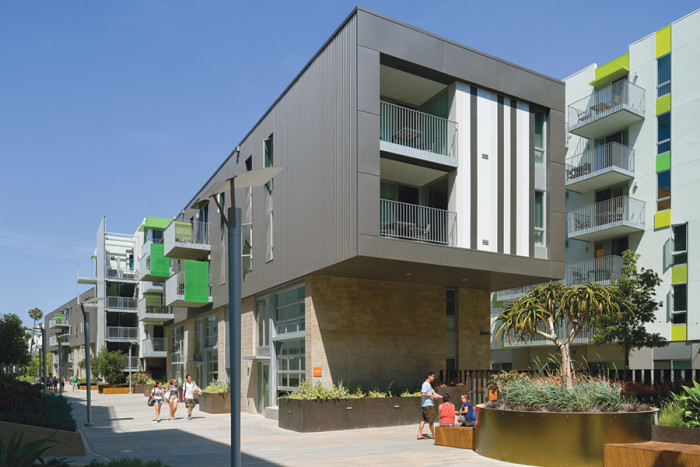
A new report by the California Housing Partnership Corporation released Monday revealed that L.A. County was short more than half a million affordable rental homes to meet the needs of the region’s low-income residents.
Home to roughly one percent of the county’s population, Santa Monica’s share of the affordable housing gap would translate to about 5,000 rental homes for low-income tenants, but at the current rate the city approves new homes, it would take more than six decades to reach that goal.
Since Santa Monica requires that about a third of new housing in the city be rented below market rate to lower-income households, in order to generate the 5,000 affordable units needed, about 10,000 market rate apartments would need to be approved.
But the city has only approved on average 231 new units a year since 1994, according to the city’s annual report on Proposition R, the ballot measure that voters approved in 1990 to amend the city charter to require that about a third of new housing built in the city be affordable.
That means it would take nearly 64 years for Santa Monica to create its current fair share of the 551,807 affordable apartments that the CHPP’s report says are needed county-wide to relieve the growing burden of housing costs on the region’s low income tenants. Adding an annual average of 231 new homes is actually a full 20 units more a year than the state currently requires of Santa Monica. If the city added housing based on that requirement, it would take more than 70 years to meet the current need for affordable housing.
The report comes just as Santa Monica is considering an aggressively slow-growth plan for its downtown. The plan would increase the amount of affordable housing developers would be required to build along with their market rate projects while simultaneously downzoning much of the downtown to reduce the number of units that can be built overall. That would make even the 2,500 units the draft plan projects could be built by 2030 a longshot.
The cost of housing has very real impacts on the lives of the most vulnerable in the region. According to the report, “Los Angeles County’s lowest-income renters spend 70 [percent] of income on rent, leaving little left for food, transportation, health expenses, and other needs.”
And, when housing costs are taken into account, L.A. County’s poverty rate jumps from 18 percent to more than 25 percent. It’s no coincidence that homelessness rates are climbing.
Santa Monica has some of the highest housing costs in the region, which, from a social justice perspective, is problematic because the city also boasts a high concentration of services, jobs that pay living wages, and quality schools, all of which necessary resources for people to escape the cycle of poverty.
There are several factors causing the squeeze on the region’s low-income residents, according to CHPP’s report.
“Median rent in Los Angeles County has increased 32 [percent] since 2000 while median renter household income has decreased 3 [percent], when adjusted for inflation,” the report reads.
In addition to wage stagnation, decades of underbuilding housing continues to artificially drive up market-rate rents. At the same time, resources for financing affordable housing projects, including redevelopment agencies shut down in 2012 by Governor Jerry Brown, have either shrunk or dried up completely.
Santa Monica’s redevelopment agency provided about $15 million a year for affordable housing financing. Recently, voters approved Measures GS and GSH, a small sales and use tax increase which will generate money for affordable housing and schools. The measures are expected to generate about half what the redevelopment agency used to provide for preservation and production of affordable housing. Still, with uncertainty the future funding for federal assistance programs like Section 8, which provides vouchers for low-income renters, it’s unclear whether any GS/GSH money will be used to fill in the gaps for these vital programs instead of production of much-needed new affordable housing.
The issue of housing production remains a politically fraught one. Since 2012, the city lost out on at least 1,000 new rental homes — at least 30 percent of which would have been affordable because of Prop R — as a direct result of community opposition to projects proposed on underused commercial sites.
Even the relatively modest average of 231 units a year remains a significant point of controversy in some circles, though the electorate soundly rejected the draconian anti-development Measure LV, which would have required a public vote for nearly all projects taller than 32 feet.
While state legislators, including Santa Monica’s representative in the State Assembly, are increasingly taking an aggressive tack to address the housing crisis, places like Santa Monica are still a long way off from even openly discussing, let alone planning for, the type of housing growth that would allow them to keep pace with its regional fair share of even subsidized affordable housing.
